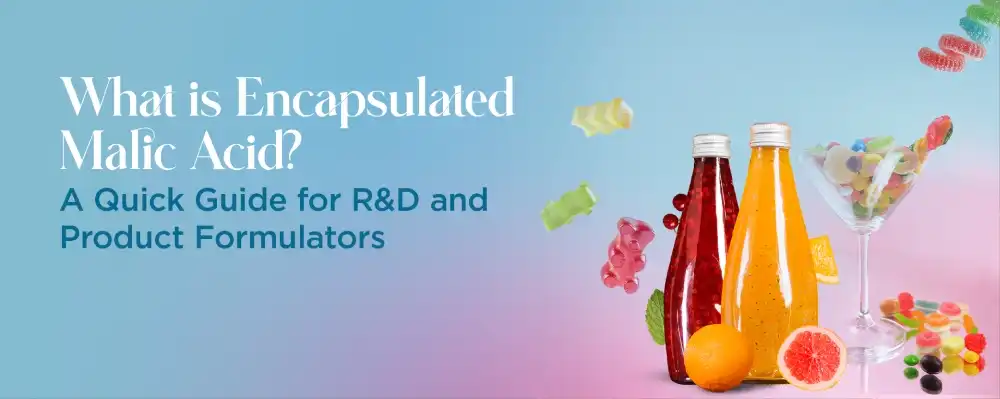Most Popular

In the fast-paced food and beverage industry today, product development groups and R&D groups are under pressure to innovate all the time, without having to compromise on stability, flavour, or shelf life. Amongst the numerous functional ingredients employed to refine the formula, malic acid stands out for its sharp, snappy astringency and flavour enhancement potential. What do you do when you need to control the release of malic acid for improved product performance?
That is where encapsulated malic acid enters the picture, a new solution with improved control, targeted delivery, and improved product quality for many uses.
Malic acid is an organic acid that naturally occurs in fruits such as apples and cherries, making them taste tart. It is frequently applied in:
It is used to increase sourness, strengthen flavour, and control pH and thus becomes a staple ingredient in food and nutraceutical product formulation.
In fine applications or multi-step processing, however, the addition of free (unencapsulated) malic acid can be challenging in a number of ways:
Encapsulated malic acid is a form of malic acid that has a food-grade encapsulating wall surrounding it, usually manufactured from lipids, starch, or cellulosic-based materials. During encapsulation, the delivery of malic acid is delayed such that formulators have the ability to manage when and where the acid will activate during the shelf life of the product.
The encapsulation coating is hydrophobic, meaning it offers moisture resistance and protects the acid from degrading or reacting prematurely when exposed to moisture during storage or processing.
Encapsulation separates malic acid from other elements by a barrier coating. This coating will break down only by specific processes, including:
This controlled release process guarantees malic acid only gets activated when necessary, providing functional and sensorial value.
Basic malic acid degrades or loses its potency when exposed to moisture and heat in use, such as baking or frying. Encapsulated malic acid maintains the tartness, retaining the release of the acid until the decisive thermal steps have been accomplished.
For use in confections or layered confections, encapsulated malic acid enables you to control the timing of tartness, creating layered taste, perfect for chewables, filled candies, and gums.
Guarding against early reaction with other ingredients (e.g., leavening agents or vitamins), encapsulated malic acid maximizes the stability and shelf life of the end product.
In sensitive applications like high-protein bars or effervescent tablets, premature malic acid release affects structure. Encapsulated malic acid avoids premature acidification and achieves the desired texture and structure.
Malic acid in controlled release leaves more flexibility for mixing, heating, or extrusion, and reduces rework and batch uniformity.
Encapsulated malic acid is applied extensively in many types of food, drinks, and nutraceuticals, particularly where targeted flavour release or acid protection is needed. A few typical applications are as follows:
Encapsulated malic acid is food-grade and approved by regulatory agencies like:
Malic acid and the material used for encapsulation (hydrogenated oil, starch, etc.) both need to be included while labelling according to local food laws.
With food consumers expecting more – more flavour, better texture, and value from functions, the formulator requires the kind of solutions that deliver on precision without sacrificing anything. Encapsulated malic acid is one such solution that provides flavour management, process stability, and sensory enhancement in a single package.
At Koel Colours, we have expertise in high-performance encapsulated functional ingredients that enable R&D experts to formulate wiser, cleaner, and more efficient products. Are you creating the next candy sensation or curing pH issues in baked foods? Our encapsulated malic acid may be your winning advantage.
Want to learn more about tailoring encapsulated acids to your particular requirements? Get in touch with the Koel Colours technical team now.